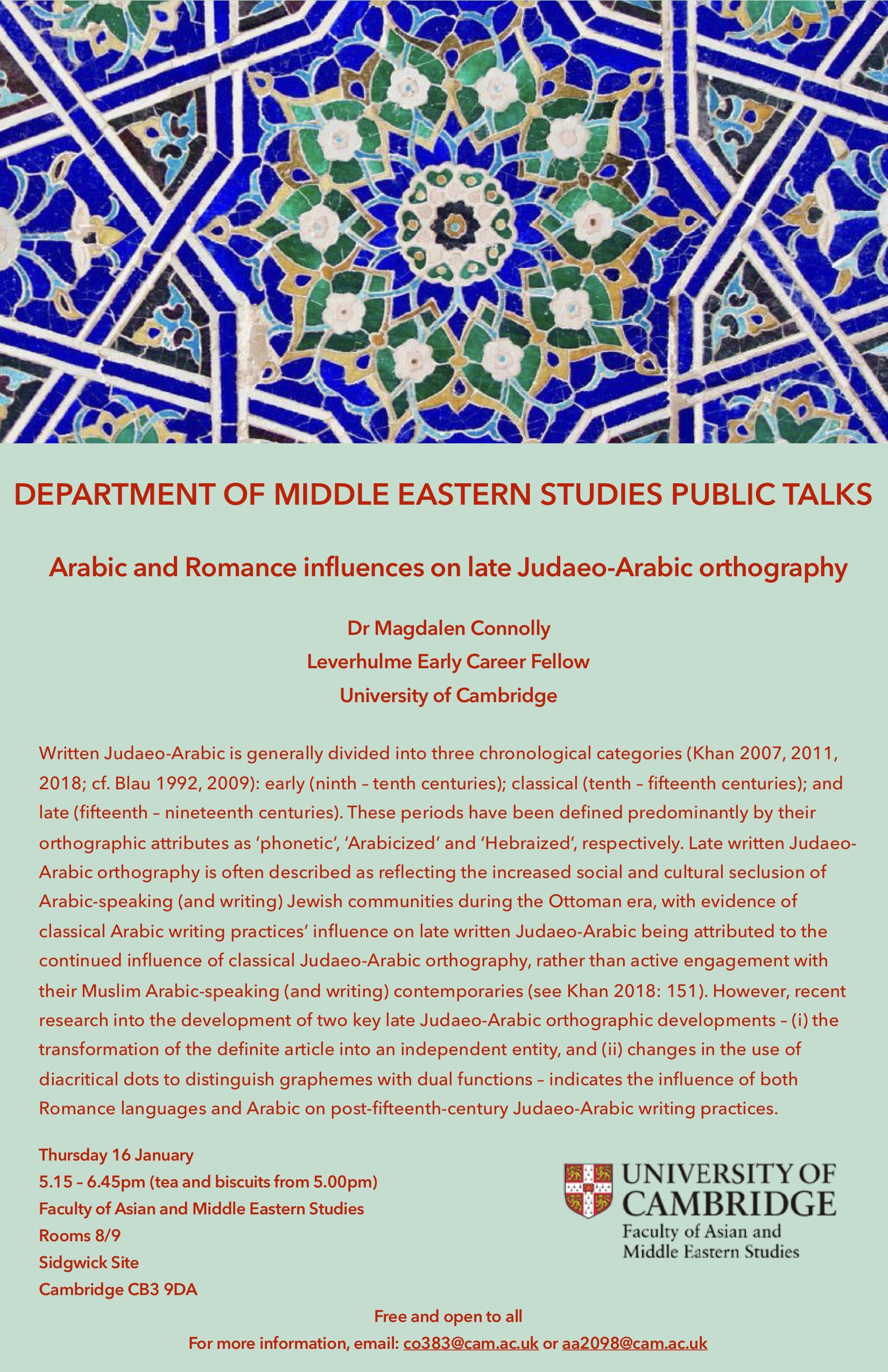 MES Public Talks Seminar given by Dr Magdalen Connolly, University of Cambridge
MES Public Talks Seminar given by Dr Magdalen Connolly, University of Cambridge
Written Judaeo-Arabic is generally divided into three chronological categories (Khan 2007, 2011, 2018; cf. Blau 1992, 2009): early (ninth – tenth centuries); classical (tenth – fifteenth centuries); and late (fifteenth – nineteenth centuries). These periods have been defined predominantly by their orthographic attributes as ‘phonetic’, ‘Arabicized’ and ‘Hebraized’, respectively. Late written Judaeo-Arabic orthography is often described as reflecting the increased social and cultural seclusion of Arabic-speaking (and writing) Jewish communities during the Ottoman era, with evidence of classical Arabic writing practices’ influence on late written Judaeo-Arabic being attributed to the continued influence of classical Judaeo-Arabic orthography, rather than active engagement with their Muslim Arabic-speaking (and writing) contemporaries (see Khan 2018: 151). However, recent research into the development of two key late Judaeo-Arabic orthographic developments – (i) the transformation of the definite article into an independent entity, and (ii) changes in the use of diacritical dots to distinguish graphemes with dual functions – indicates the influence of both Romance languages and Arabic on post-fifteenth-century Judaeo-Arabic writing practices.
Magdalen Connolly is currently a Leverhulme Early Career Fellow at the Faculty of Asian and Middle Eastern Studies, Cambridge, where she researches written linguistic features of Egyptian Jewish, Muslim and Christian folk tales from the Ottoman period. After completing her CHESS-funded PhD in Judaeo-Arabic philology at the University of Cambridge (May 2018), under the supervision of Prof. Geoffrey Khan, Magdalen became a part-time Research Assistant at the Cambridge University Library’s Taylor-Schechter Genizah Research Unit, where she identifies and catalogues Arabic and Judaeo-Arabic manuscripts in the Cairo Genizah collections. She continues this work as a Research Associate one day a week. Her research centres on the orthography, (limited) phonology, morphology and syntax of Jewish, Muslim and Christian Middle Arabic folk tales.
